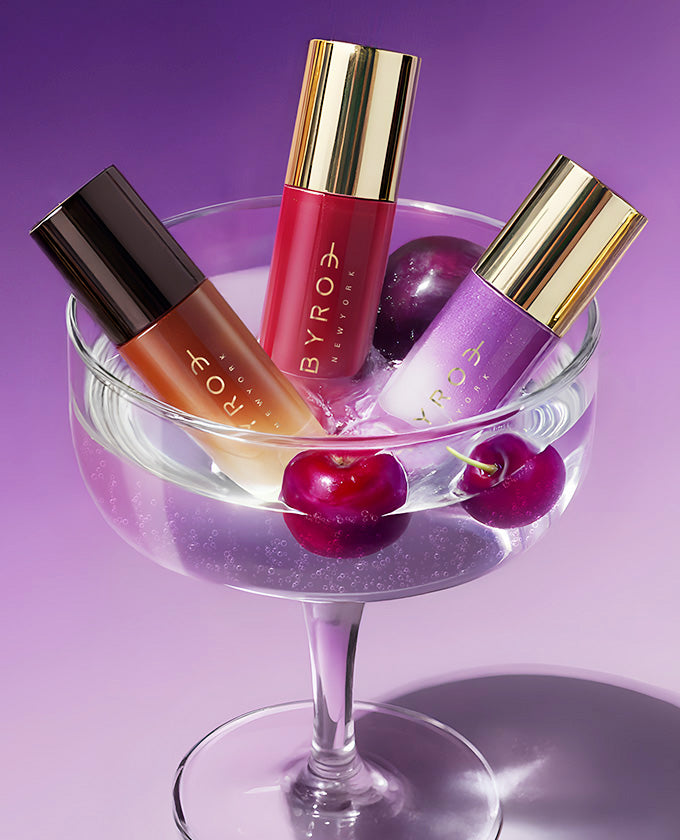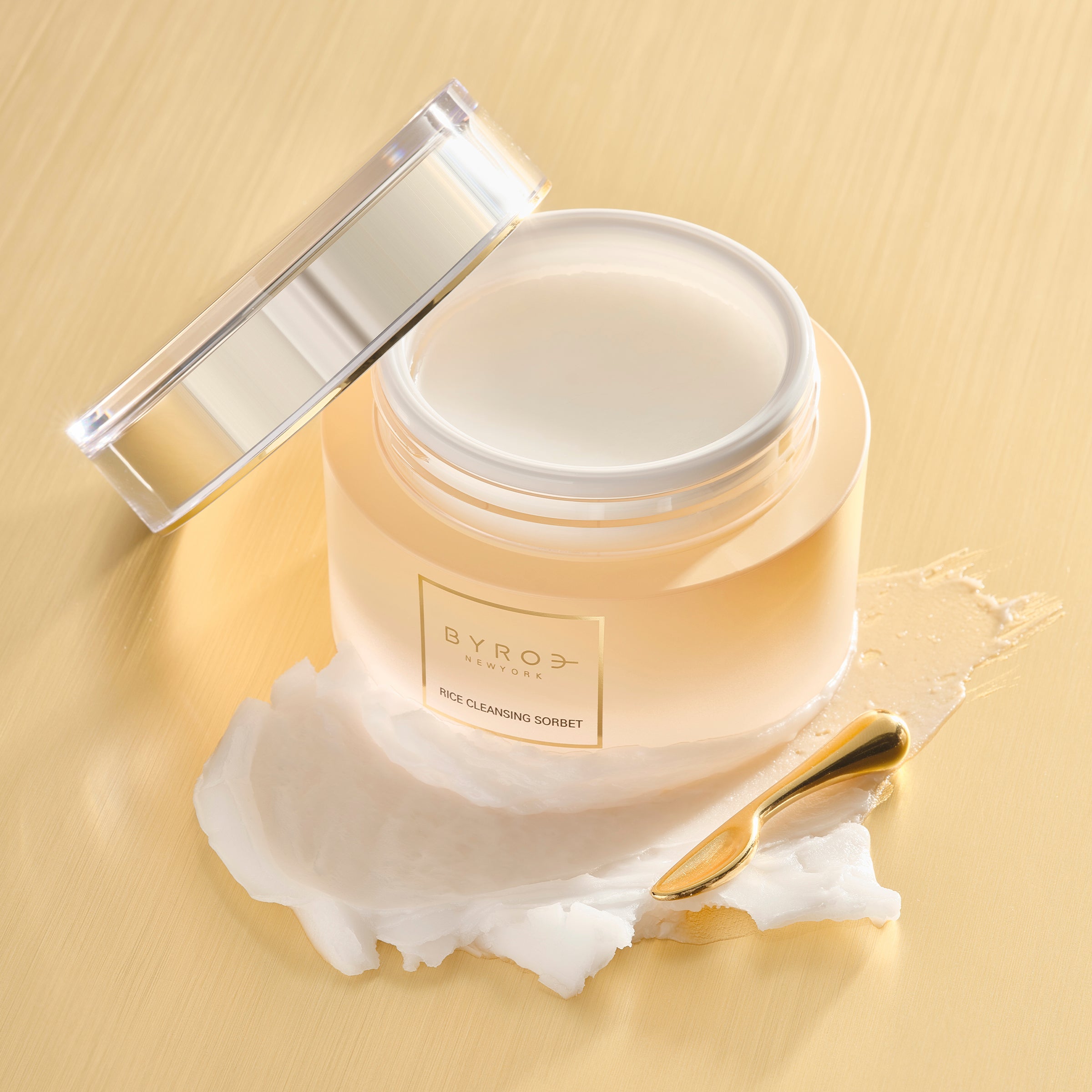As fall weather replaces the summer heat, cooler temperatures can be drying for your skin. It may become a little more challenging to keep your skin plump and glowy during these upcoming autumn months, but there’s nothing a little exfoliation can’t fix! Whether you’re a skincare fanatic or a beginner, exfoliating is a must in everyone’s skincare routine.
How To Properly Exfoliate Your Skin
How To Properly Exfoliate Your Skin
How To Properly Exfoliate Your Skin
Achieving glowy skin is easier than you think!
What is Exfoliating?
Exfoliating is the process of removing dead skin cell buildup from the top layer of your skin. It improves the overall appearance of dull, congested skin and helps to remove stubborn signs of damage and aging. With due time, exfoliating can fade dark marks, revealing a radiant complexion. It even boosts circulation in your face. Additionally, exfoliating allows the rest of your skincare products to penetrate deeper, so it’s safe to say they’ll work even better than before.
💛 What are the different types of exfoliants?
Ready to exfoliate? Not so fast! Before diving deep into the world of exfoliation, it’s essential to understand the different types of exfoliants and which one is the most suitable for your skin type.
Types of Exfoliants
|
Physical |
1. An exfoliating tool such as a washcloth or scrubbing brush. 2. A scrub that consists of granular particles or microbeads.
Physical exfoliators slough away dead skin cells found on the topmost layer of the skin. |
|
Chemical |
1. An acid that exfoliates the skin.
Common chemical exfoliants include alpha-hydroxy acid, beta-hydroxy acid, and glycolic acid. They work even deeper than physical exfoliators, cleaning out stubborn pores revealing smoother, healthier skin. |
|
Enzyme |
1. A gentler chemical exfoliant derived from fruit enzymes such as tomatoes and papayas.
These exfoliators contain proteins that speed up the skin renewal process without irritating the skin |
Which Exfoliant Is Right For You?
According to the American Academy of Dermatology Association, dry, sensitive, or acne-prone skin types should stick to less abrasive methods of exfoliation like using a gentle washcloth or a mild chemical exfoliant. Enzymes derived from fruits are gentler alternatives so those with dry or sensitive skin should take note. People with normal to oily skin can use stronger exfoliation methods, but if you’re ever unsure, start small and be very gentle. At the end of the day, it’s all about personal preference and we suggest trying out different types of exfoliants to see which is the most effective for you.
💛 How Often Should I Exfoliate?
We suggest starting out exfoliating at most 1-2 times a week. After that, you can assess your skin to see if it needs an extra dose of exfoliation. But, be mindful of overuse as it can damage your skin barrier leading to redness, inflammation, and increased breakouts.
LONG STORY SHORT
Exfoliating is an essential part of skin health! Everyone can find the best method of exfoliation depending on their skin type to reveal a natural, luminous glow.
It’s formulated with a powerful proprietary blend of 33 different antioxidant-rich greens that contains a clarifying combo of artichoke, broccoli, and matcha green tea. The potent green complex hydrates, balances and purifies smoothing unwanted texture and protecting the skin from dehydration. It also contains a soothing base of centella asiatica leaf water to calm redness and inflammation leaving you with a healthy, hydrated complexion. It’s a must-have to maintain clear, flawless skin!
Achieving glowy skin is easier than you think!
As fall weather replaces the summer heat, cooler temperatures can be drying for your skin. It may become a little more challenging to keep your skin plump and glowy during these upcoming autumn months, but there’s nothing a little exfoliation can’t fix! Whether you’re a skincare fanatic or a beginner, exfoliating is a must in everyone’s skincare routine.
What is Exfoliating?
Exfoliating is the process of removing dead skin cell buildup from the top layer of your skin. It improves the overall appearance of dull, congested skin and helps to remove stubborn signs of damage and aging. With due time, exfoliating can fade dark marks, revealing a radiant complexion. It even boosts circulation in your face. Additionally, exfoliating allows the rest of your skincare products to penetrate deeper, so it’s safe to say they’ll work even better than before.
💛 What are the different types of exfoliants?
Ready to exfoliate? Not so fast! Before diving deep into the world of exfoliation, it’s essential to understand the different types of exfoliants and which one is the most suitable for your skin type.
Types of Exfoliants
|
Physical |
1. An exfoliating tool such as a washcloth or scrubbing brush. 2. A scrub that consists of granular particles or microbeads. Physical exfoliators slough away dead skin cells found on the topmost layer of the skin. |
|
Chemical |
1. An acid that exfoliates the skin. Common chemical exfoliants include alpha-hydroxy acid, beta-hydroxy acid, and glycolic acid. They work even deeper than physical exfoliators, cleaning out stubborn pores revealing smoother, healthier skin. |
|
Enzyme |
1. A gentler chemical exfoliant derived from fruit enzymes such as tomatoes and papayas These exfoliators contain proteins that speed up the skin renewal process without irritating the skin. |
Which Exfoliant Is Right For You?
According to the American Academy of Dermatology Association, dry, sensitive, or acne-prone skin types should stick to less abrasive methods of exfoliation like using a gentle washcloth or a mild chemical exfoliant. Enzymes derived from fruits are gentler alternatives so those with dry or sensitive skin should take note. People with normal to oily skin can use stronger exfoliation methods, but if you’re ever unsure, start small and be very gentle. At the end of the day, it’s all about personal preference and we suggest trying out different types of exfoliants to see which is the most effective for you.
💛 How Often Should I Exfoliate?
We suggest starting out exfoliating at most 1-2 times a week. After that, you can assess your skin to see if it needs an extra dose of exfoliation. But, be mindful of overuse as it can damage your skin barrier leading to redness, inflammation, and increased breakouts.
LONG STORY SHORT
Exfoliating is an essential part of skin health! Everyone can find the best method of exfoliation depending on their skin type to reveal a natural, luminous glow.






Leave a comment
All comments are moderated before being published.
This site is protected by hCaptcha and the hCaptcha Privacy Policy and Terms of Service apply.